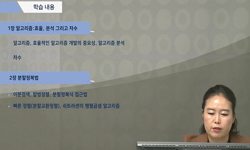The number of people with disabilities and elderly is increasing rapidly around the world, including in Korea. Tourism is an important leisure activity in modern societies, and the right to tourism for vulnerable tourists is a fundamental human right....
http://chineseinput.net/에서 pinyin(병음)방식으로 중국어를 변환할 수 있습니다.
변환된 중국어를 복사하여 사용하시면 됩니다.
- 中文 을 입력하시려면 zhongwen을 입력하시고 space를누르시면됩니다.
- 北京 을 입력하시려면 beijing을 입력하시고 space를 누르시면 됩니다.

관광 약자의 보행 접근성을 고려한 관광지 내 최적의 관광코스 추천 알고리즘 개발 = A development of an algorithm that recommends the optimal tourist routes in tour destinations to consider walking accessibility of vulnerable tourists
한글로보기https://www.riss.kr/link?id=A108848622
- 저자
- 발행기관
- 학술지명
- 권호사항
-
발행연도
2023
-
작성언어
Korean
-
주제어
관광 약자 ; 관광코스 ; 보행 접근성 ; 최적화 ; 알고리즘 ; vulnerable tourists ; tourist routes ; walking accessibility ; optimization ; algorithm
-
등재정보
KCI등재
-
자료형태
학술저널
-
수록면
49-62(14쪽)
- DOI식별코드
- 제공처
-
0
상세조회 -
0
다운로드
부가정보
다국어 초록 (Multilingual Abstract)
The number of people with disabilities and elderly is increasing rapidly around the world, including in Korea. Tourism is an important leisure activity in modern societies, and the right to tourism for vulnerable tourists is a fundamental human right. In addition, tourism for vulnerable tourists is a new business opportunity as they constitute a high proportion of the total population. This study aims to develop a mathematical algorithm that recommends and provides an optimal tourist course that maximizes satisfaction by considering the walking accessibility between tourist points within a tourist destination. Tourist satisfaction decreases as the walking time and the passage difficulty increase. To reflect this, it considers the passability and passage difficulty according to the type of road(pavement, flagstone, gravel) and slope(uphill, downhill, flat) between tourist points. The travel time between tourist points is calculated using the passage difficulty and distance. Tourists are classified by type(non-disabled tourists who do not need a wheelchair, wheelchair-using tourists with a companion, and wheelchair-using tourists without a companion). The numerical experiments show that the type of walking path has the greatest impact on the tourist routes and that the slope also has an impact on travel time and satisfaction. This study contributes to maximizing tourist satisfaction by considering the walking accessibility of vulnerable tourists and provides insights for developing a web/app that recommends tourist courses suitable for vulnerable tourists.
동일학술지(권/호) 다른 논문
-
ChatGPT를 통해 수집한 관광정보의 품질이 이용자들의 지각된 가치 및 만족도에 미치는 영향
- 한국호텔관광학회
- 왕새롬
- 2023
- KCI등재
-
K-culture에 관한 20·30대 중국인의 주관적 인식 연구
- 한국호텔관광학회
- 강삼
- 2023
- KCI등재
-
온라인 강의에 대한 항공 서비스 전공 대학생의 인식 유형 비교: 2년제와 4년제 대학교를 중심으로
- 한국호텔관광학회
- 이주양
- 2023
- KCI등재
-
기후환경 변화와 관련된 ESG 요인이 제주지역 관광에 미치는 영향
- 한국호텔관광학회
- 김경회
- 2023
- KCI등재





 KCI
KCI DBpia
DBpia






